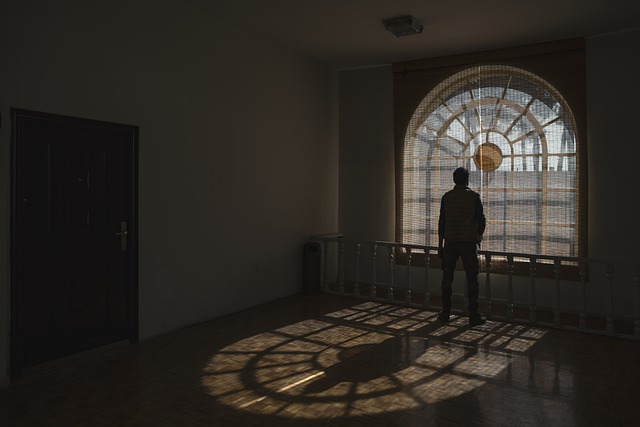Chris Willard provided a 12-Minute Meditation podcast on the 15 August this year on the theme, A Meditation to Notice What’s Present and What Isn’t. He noted that spaces are everywhere if we look and by paying attention to the “spaces between” we can grow in awareness of what is around us as well as what is missing. Focusing on the spaces between grounds us in the present, enables us to see the potentiality in spaces and heightens out powers of concentration. Bringing our awareness to these spaces enriches our creativity and deepens our appreciation of the magnitude of our world, the beauty of nature and the uniqueness of the people who are around us.
Chris Willard has a Doctorate in Psychology focusing on neuroscience and positive psychology. He is an author, practising psychologist and consultant, a trainer and faculty member of the Harvard Medical School. He specialises in teaching mindfulness to adolescents and young adults. Chris’ books are readily available on Bookshop.org and his online courses can be accessed on his website. He is the co-author with Olivier Weisser of The In-Between Book – designed as an interactive resource for children to develop mindfulness. Chris is also a public speaker and videos of his talks can be found on YouTube.
Guided mediation
Throughout the podcast, Chris guides us in a meditation process designed to increase our ability to pay attention to the “space between”, both internally and externally. At the outset he suggests that, after adopting a comfortable position, we focus on our breathing. This initial process involves concentrating not only on our in-breath and out-breath but also on the spaces between these – learning to rest in our breathing space between our inhale and exhale.
Spaces between objects in a room
As we progress with this meditation, Chris turns our attention to the spaces between objects in our room:
- the shape of objects
- the form of spaces between objects
- the dimensions of those spaces
- how frequently the spaces occur
- the patterns of spaces – small, large, irregular
- intentional or unintentional spaces
- the sense of openness or closure
- the visual impression of clarity or clutter.
Spaces between thoughts and emotions
Viktor Frankl reminds us that there is a space between a stimulus and our response and in that space lies our freedom – we can choose how we respond. Chris encourages us to explore this inner space:
- what emotion arises with a thought?
- what events have given rise to the link between the thought and the emotion?
- how often do we employ the S.T.O.P. process to create space before we respond?
- are we carrying resentment and its attendant adverse behaviours?
- does our inner landscape reflect a stance of “victim or freedom”?
- do we have space within for creativity, alternative actions/responses and creating meaning in our lives?
Spaces in nature
Chris is very conscious of the natural world and the spaces within. He encourages us to explore our external world by observing the spaces in nature:
- between plants
- between trees
- between leaves
- between gardens and lawns
- between water and land
- between clouds.
Associated with this noticing is paying attention to:
- the shape and colours of clouds
- the merging of colours in the sky – yellow into green, red into purple, light into dark
- the changing shape and spaces on the horizon
- the crowded space of a worm farm
- the flight of birds and formations
- the sounds of nature and the gaps between
- the bird calls and delayed responses
- the movement of the wind and the spaces it creates.
Spaces in our interactions with others
Everyday we are in interaction with people close to us, our colleagues, associates and strangers. We can become more conscious of the spaces between us and others by noticing:
- how our assumptions and stereotypes leave no room for sustained engagement
- how we listen by creating space for others to talk
- the pace of our thoughts leaving no gap for deep listening
- the absence of spaces in our interactions to truly get to know someone, their life history and their feelings.
Reflection
We can extend our focus on the “spaces between” by reviewing our day:
- have we created space for reflection and review?
- have we taken the opportunity to pause?
- has there been time set aside for walking and/or exercise, adequate sleep and rest?
- have we made time for a life review to protect our attention?
Our awareness of space can be shaped by cultural influences and environmental conditions. Often, we need to experience another culture/country to appreciate how we view the “space between”. Following a trip to France, I became so much more aware of my own spatial environment in Brisbane – the space between cars, buildings, people and cities, the openness compared to the “constriction”.
Shelley Davidow in her memoir, Whisperings in the Blood, describes how her grandmother found the environmental shift from America to South Africa disarming – “At night, Africa closes in around the house and bathes it in its foreignness”. Associated with this sense of restriction are the shrieks of nightbirds, grunting of hippos, and the “distant drumming and singing”. Her grandmother was overcome by the open spaces and the loss of “signs of human habitation and civilisation” – the city comforts, landmarks and buildings of various sizes and shapes.
As we grow in mindfulness by paying attention to the “space between’, we can enrich our lives and interactions, enhance our awareness of possibilities, and make room for innovation and creativity. Consciousness of space can improve both our mental and physical health – we can avoid being consumed by the busyness of our life and the endless negative pattern of our thoughts.
___________________________________________
Image by Albrecht Fietz from Pixabay
By Ron Passfield – Copyright (Creative Commons license, Attribution–Non Commercial–No Derivatives)
Disclosure: If you purchase a product through this site, I may earn a commission which will help to pay for the site, the associated Meetup group and the resources to support the blog.









